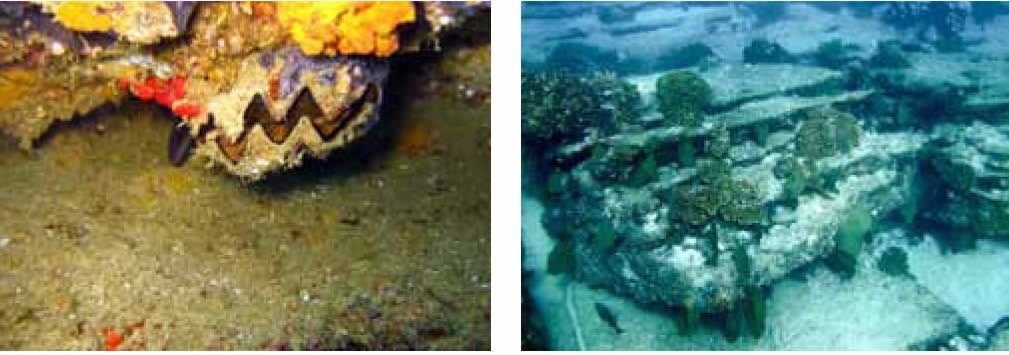
This community is but one of the places in which grassroots resistance has focused on the so-called megaprojects. These projects are touted by investors and governments as being the key to achieving economic development in zones that are considered to be underdeveloped, yet that possess the immense natural wealth that makes the Vermilion Sea, also known as the Gulf of California, a true oasis.

“The Cabo Cortés project should not be carried out, since a number of arguments were presented that were seriously wrong regarding the technical data, and this puts the marine life of the Cabo Pulmo reef at risk. The Director General of Environmental Risk and Impact chose to ignore his departmental colleagues’ recommendations and authorized a project that will cause tremendous harm to the region’s ecosystems", declared Exequiel Ezcurra, Director of the University of California Institute for Mexico and the United States.
“The original Environmental Impact Statement considered the immediate effects of the construction of the megaproject, but presented little information about certain threats in the future. The problems that Cabo Cortés can bring to the reef come from a number of sources, among these the potential danger from the construction of the desalinization plant and from the brine wastewater that could reach the northern zone of the reef under certain speed and direction conditions of the tide“, he added.
Additionally two key threats, of which little is spoken, are the loss of sediments resulting from the inevitable dredging of the marina entrance, which would normally return to form the park's northern beaches. However, if sediment is dumped too far from the coast, it would eventually lead to the loss of the beaches, similar to what had happened in Cancun a few years ago", said Héctor Reyes, professor and researcher at the Autonomous University of Baja California Sur.
The Mexican Center for Environmental Law (CEMDA) strengthened the scientists’ call for action with a communiqué on July 6, in which it pointed out similar documented cases in other parts of northwest Mexico, such as Puerto Peñasco, Sonora and both Cabo San Lucas and San José del Cabo. In these places, right next to expensive private property belonging to foreign tourists that excludes the local population, can be found streets without pavement or sewers.
“We are deeply saddened that SEMARNAT has allowed the opportunity to pass to rectify and protect Cabo Pulmo, a place of world environmental heritage, and that they have put at risk the letter and spirit of the instrument of environmental policies, such as Los Cabos' Environmental Law,“ said Agustín Bravo, the Northwest Regional Coordinator for the non-profit CEMDA.
CEMDA appealed the decision which granted the permit that was issued by Mauricio Limon from the office of the Undersecretary for Management of Environmental Protection within SEMARNAT.
The Baja California peninsula is world renowned as one of the most beautiful and peaceful places on the planet. Natural wonders and cultural diversity abound.
Not only do visitors from all around the world come to the peninsula to study both the ancient and contemporary indigenous cultures, but they also come to study the universe from atop the San Pedro Mártir observatory, or study its waters, to which gray whales migrate, or its deserts, flora and fauna.
Lovers of adventure tourism will find appealing challenges in Cabo Pulmo, such as diving the reefs. It is because of this that the inhabitants changed their previous lifestyle to incorporate the task of the complete protection of the Cabo Pulmo National Marine Park

Because of this, both the residents and scientists question the development of Cabo Cortés: “with these results, residents of Cabo Pulmo have shown that the recovery of marine ecosystems is possible and that making a good living from the conservation of these ecosystems is also viable, since in economic terms, Cabo Pulmo generates more income per capita than any mega development,” points out Octavio Aburto Oropeza, researcher from Scripps Oceanic Institute in California.
The defense of this place was most recently taken up at the 35th meeting of the World Heritage Committee of UNESCO (United Nations Educational, Scientific and Cultural Organization) which was held on the June 29, 2011in Paris, France.
Investigators on the case agree that Cabo Pulmo, considered a World Heritage Site, is already at risk. They therefore demand that this UN body, of which Mexico is a member country, take some urgent measures for its protection.
No less than 22 scientists from 18 national and international academic institutions exhorted UNESCO to petition the Mexican government, asking that it reject this megaproject. They did so via the document available for download at this site.
“Right now, Cabo Pulmo is seriously under threat. In March, the Secretary of the Environment and Natural Resources (SEMARNAT) approved key components of Cabo Cortés – one of the many large real estate tourism projects that are of immediate threat to marine life, the coast of Cabo Pulmo and the local economy,” it stated.
The demands include: sending a scientific mission to the area to investigate the potential damages to the area and the reef that could be caused by the large tourism and real estate projects in the region; add the site to the list of threatened World Heritage sites; and